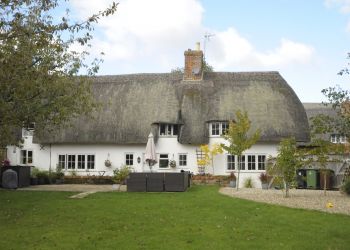In this blog we will look at how and why buildings are listed. Be in no doubt however that this advice does have exceptions, for instance we recently inspected a 16th century property outside Reading that had some distinctions that made this property extremely rare, however it was not listed… why? Well usually because English Heritage and Co could not get access to the inside and therefore the listings based on a visual inspection of the exterior. Unfortunately the outsides are often messed about with something rotten and its difficult to fully assess a building this way. Other reasons are certain homes and estates are kept in the same family for generations and these private states are generally off limits, and therefore the buildings are not known generally. This is often the case when estates do not want the added pressure of maintenance, planning etc. on their buildings.
So, these are exceptions and generally the professional tasked with collecting data on buildings do a good job.
Buildings are selected for a range of qualities, the most significant being their age.
Generally, this makes it nice and easy up to a point, the older a building is the more likely it is to be listed. Modern buildings are listed but they need to be particularly special in order to qualify. All buildings built before 1700 which have survived in anything like their original condition are listed. Most buildings dating from between 1700 and 1840 are listed, although some selectivity is applied, while buildings from 1840 to 1914 are selected on the basis of their demonstrating technological advances, being the work of particular architects, or possessing some notable feature.
More recent post-war buildings are also now being considered for listing. The very wide definition of ‘building’ in The Town and Country Planning Act (1990) – “Any structure or erection, and any part of a building, as so defined” – allows any man-made structure, from barns to bridges and telephone boxes to grave stones, to be included on the statutory list.
When it comes to a listed building and you have a chat with a heritage professional one word will become very important, and that word is…. SIGNIFICANCE.
It can get a little wordy and does go into quite some detail, which I will talk about soon, but basically its what makes this building significant? Is it age? Is it style? Event? Someone famous lived here or something important happened here? That’s what we mean by significance.
Now as discussed, their are different categories of Listing, and these are different in Scotland whilst England and Wales share the same description.
LISTED STATUS ENGLAND AND WALES
GRADE I Buildings are of exceptional interest; only 2.5% of listed buildings are Grade I.
GRADE II* Buildings are particularly important, being of more than special interest; 5.5% of listed buildings are Grade II*.
GRADE II Buildings of special architectural or historic interest; 92% of listed buildings are Grade II. In England there are approximately 376,000 listed building entries amounting to over 500,000 listed buildings. It is hard to be precise as one listing for example can cover a row of terraced houses.
LISTED STATUS SCOTLAND
CATEGORY A Buildings of national or international importance, either architectural or historic, or fine little-altered examples of some particular period, style or building type.
CATEGORY B Buildings of regional or more than local importance, or major examples of some particular period, style or building type which may have been altered.
CATEGORY C Buildings of local importance, lesser examples of any periods, style or building type, as originally constructed or altered; and simple, traditional buildings which group well with others in categories A and B or are part of a planned group such as an estate or an industrial complex.
Northern Ireland uses a similar system to Scotland with grades A, B+, B1 and B2.
‘Listing’ refers to a building which is included on the statutory list of ‘buildings of special architectural or historic interest.’ It recognises that a building is special in a national context and brings with it controls over alteration, extension and demolition.
Contrary to popular belief, listing normally protects the entire building both inside and out and any structures which are either attached to the building (including modern extensions) or fall within its curtilage. It sometimes includes garden walls, outbuildings and even statuary within the garden.
The statutory list includes the address of the property, the date first listed, the grade of the listing, a map reference and a brief description of the property.
Listed building search
Depending on where you are in the UK, there are different online tools to search for listed buildings and find out whether your property is listed. Use the links below to find out more.
- England: National Heritage List for England
- Scotland: Historic Environment List
- Wales: National Historic Assets of Wales
- Northern Ireland: Buildings Database
Getting permission to alter a listed building
Always contact your local authority first—they are ultimately the ones who will grant you permission. They may also offer you advice on your application for increasing its chances of approval.
If you are unsure whether your building is listed or want to discuss these matters further, please drop us an email at info@smithheritagesurveyors.com with your question and contact details and we will do our best to answer your questions.
